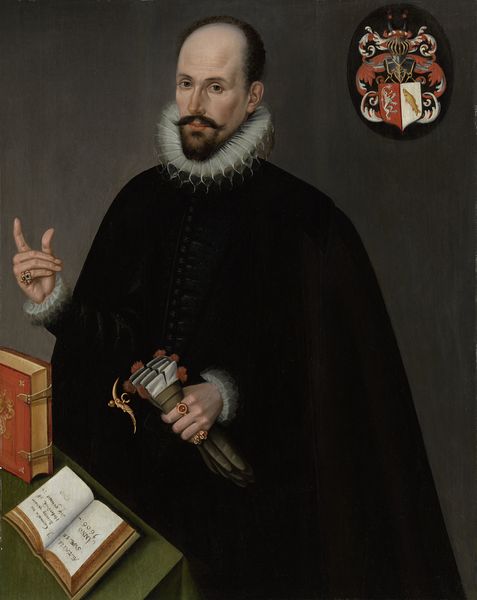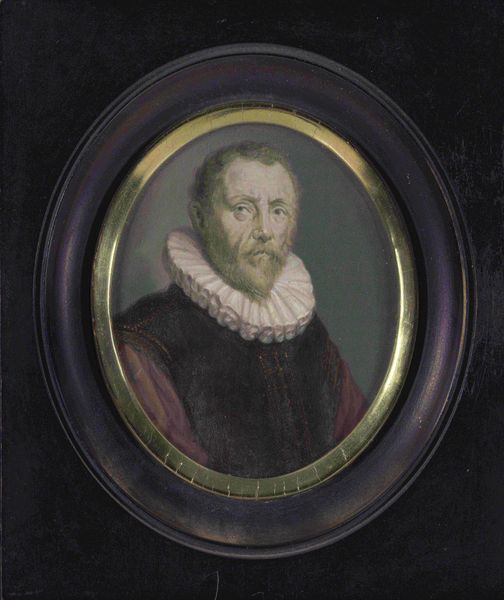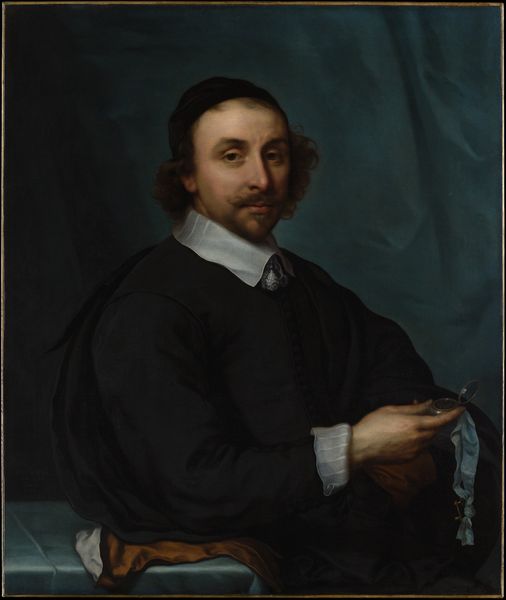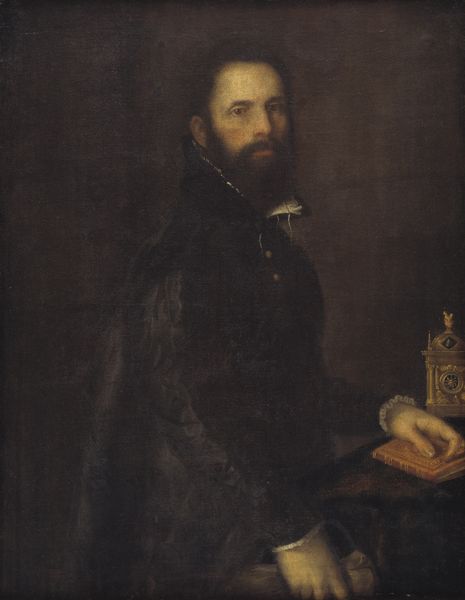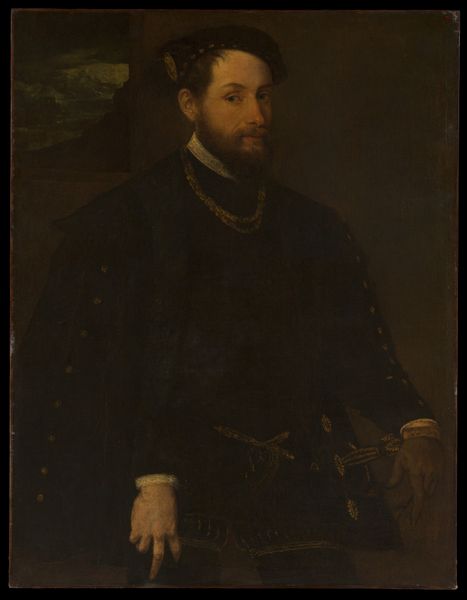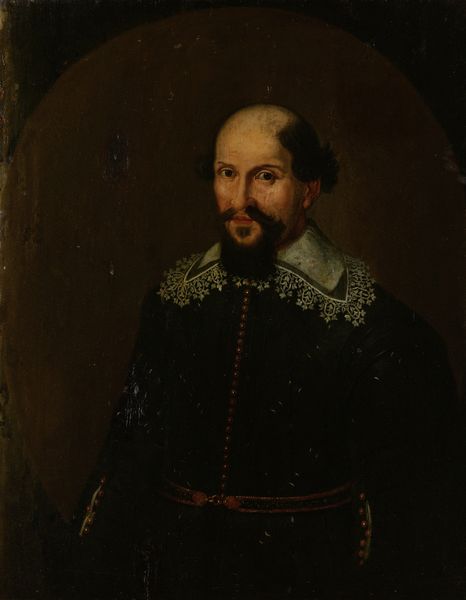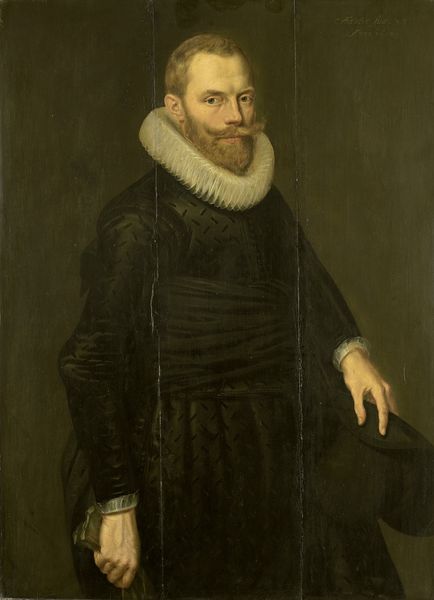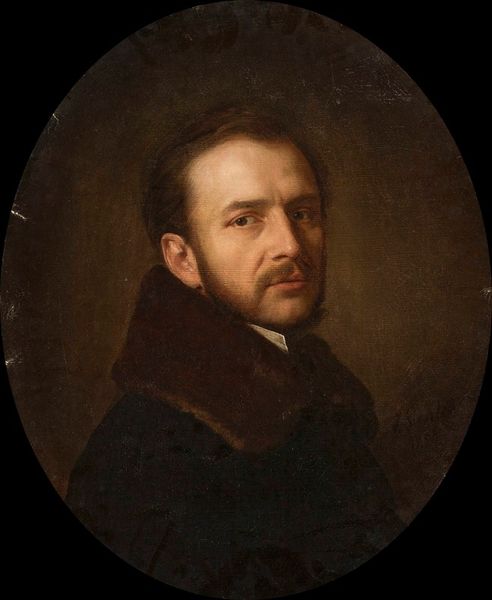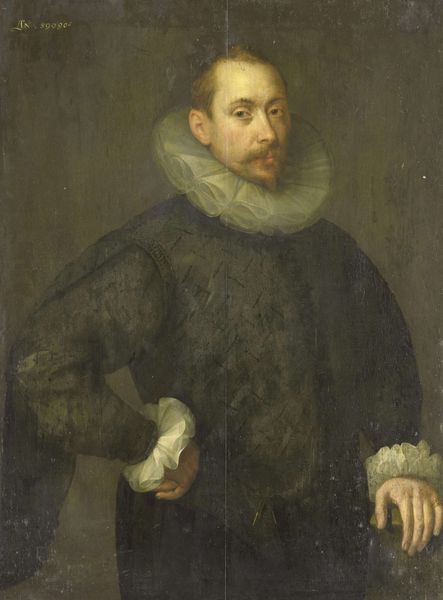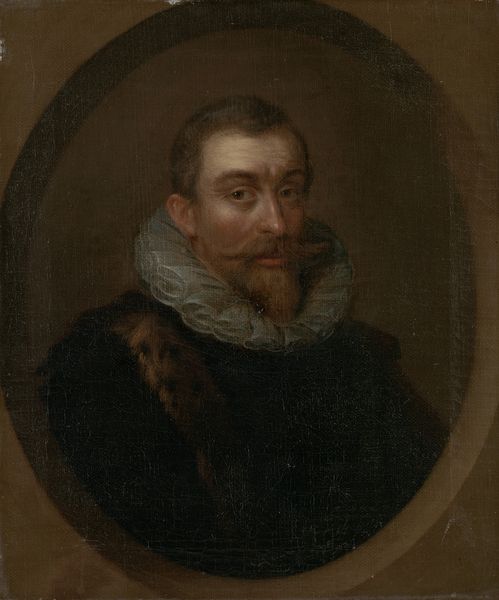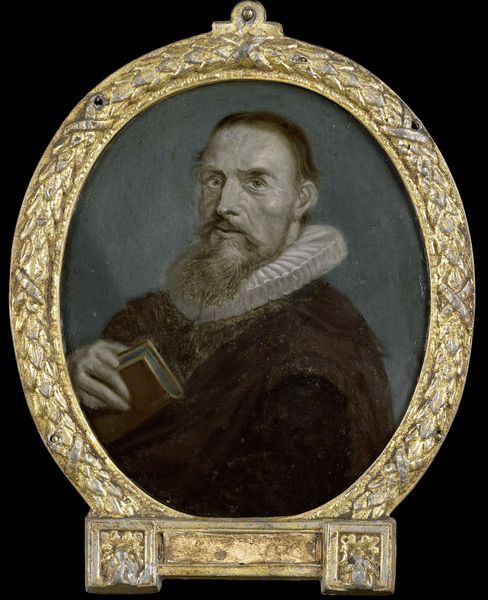
oil-paint
#
portrait
#
oil-paint
#
mannerism
#
11_renaissance
#
men
Dimensions: Diameter 5 1/2 in. (14 cm)
Copyright: Public Domain
Curator: Lavinia Fontana, a prominent figure of the late Renaissance, likely created this “Portrait of a Prelate” between 1575 and 1585 using oil paint. It’s a beautiful example of mannerist portraiture. Editor: It is quite striking; there’s an almost severe intensity in his gaze. I immediately feel a strong sense of composed power. And this rich black colour almost absorbs the light... it makes it dramatic. Curator: I agree, Fontana has masterfully captured this. It’s interesting to think about the pigments used. The blacks, derived from charcoal or bone black perhaps, were layered meticulously to create such depth. Editor: Speaking of black, consider how class and social status are broadcast through this attire. This somber clothing certainly underscores the sitter’s place within the ecclesiastical hierarchy, but what kind of restrictions did that impose? I mean, was he free, even in matters of attire, to choose what felt authentic? Curator: Exactly. The making of the clothes itself, the sourcing of the fabrics, the labor involved—these elements all contribute to the narrative Fontana creates. Editor: The very choice of clothing then becomes a political statement about power and control and his identity. Do you think that this image says something more widely about patriarchal social structure during the time? Curator: I find it fascinating how she navigates those waters. A woman painting a prelate! Her access to such commissions speaks volumes about her unique position and talent, regardless of the restrictions she could face. I see how these choices make her different from her contemporary painters. Editor: Absolutely. Fontana used those tensions as opportunities to negotiate the politics of representation in powerful ways. What else do you think of regarding those material conditions when considering its current location? Curator: Showing here at the Metropolitan Museum of Art means it has survived across centuries, going through countless conservation efforts to preserve it, along with maintaining that value as both material artifact and cultural icon. It makes us reflect upon our modern approaches to displaying artworks as commodities. Editor: This has been a wonderfully expansive perspective, seeing “Portrait of a Prelate” with both sensitivity to craft and an awareness of broader social narratives. Thank you. Curator: The pleasure was all mine. It’s always interesting to peel back layers of production and context when facing an art work.
Comments
No comments
Be the first to comment and join the conversation on the ultimate creative platform.

